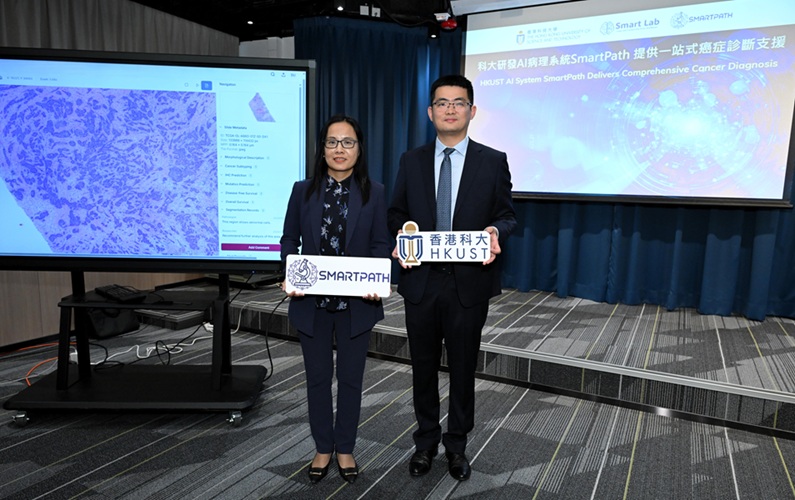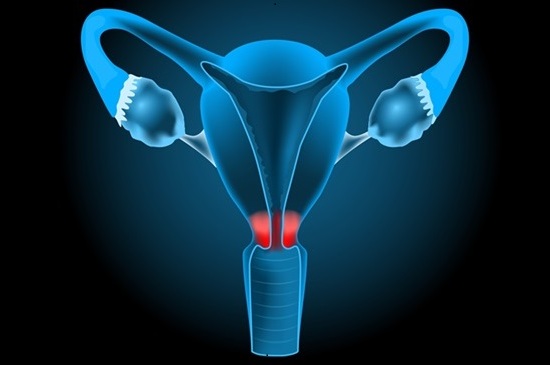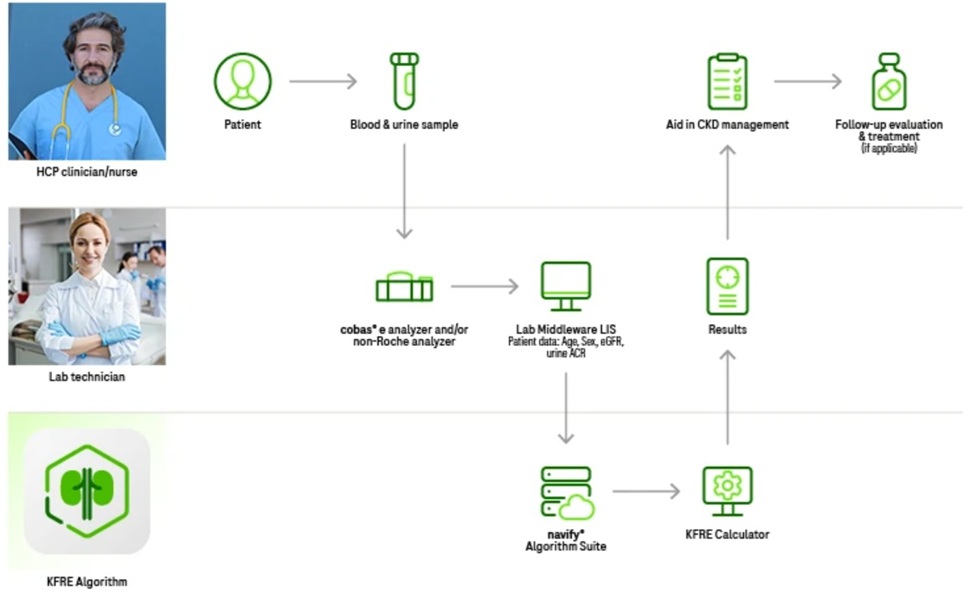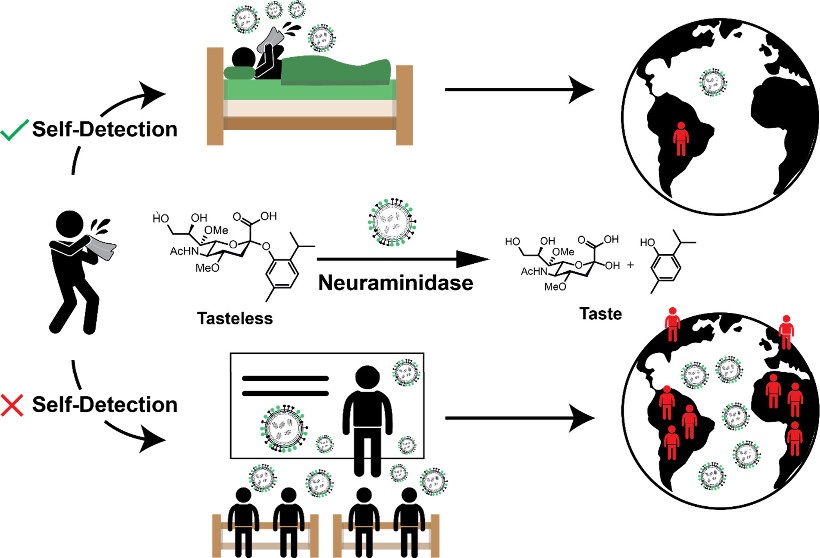Network-Extracted Ontologies Organize Knowledge from Genomic Data
|
By LabMedica International staff writers Posted on 24 Dec 2012 |
Converting huge amounts of genomic information into meaningful data about cellular processes is one of the biggest challenges of bioinformatics, and has great implications for the fields of human biology and medicine. Scientists have now devised new technology that generates a computational model of the cell from vast networks of gene and protein interactions, learning how genes and proteins connect to form higher-level cellular processes.
The study’s findings were published in the December 16, 2012, advance online publication of the journal Nature Biotechnology. “Our method creates ontology, or a specification of all the major players in the cell and the relationships between them,” said first author Janusz Dutkowski, PhD, postdoctoral researcher in the University of California (UC), San Diego School of Medicine (USA). It utilizes knowledge about how genes and proteins interact with each other and automatically organizes these data to form a comprehensive catalog of gene functions, cellular components, and mechanisms.
“What’s new about our ontology is that it is created automatically from large datasets. In this way, we see not only what is already known, but also potentially new biological components and processes--the bases for new hypotheses,” said Dr. Dutkowski.
Originally designed by philosophers attempting to clarify the nature of life, ontologies are now widely used to compress everything known about a subject in a hierarchy of terms and relationships. Intelligent information systems, such as iPhone’s (developed by Apple, Inc. Cupertino, CA, USA) Siri, are constructed on ontologies to enable reasoning about real life. Ontologies are also used by scientists to structure knowledge about topics such as bioactive compounds, taxonomy, anatomy and development, disease, and clinical diagnosis.
A gene ontology (GO) exists as well, constructed over the 10 years through a joint effort of hundreds of scientists. It is considered the gold standard for determining cell structure and gene function, containing 34,765 terms and 64,635 hierarchical relations annotating genes from more than 80 species.
“GO is very influential in biology and bioinformatics, but it is also incomplete and hard to update based on new data,” said senior author Trey Ideker, PhD, chief of the division of genetics in the School of Medicine and professor of bioengineering in UC San Diego’s Jacobs School of Engineering.
“This is expert knowledge based upon the work of many people over many, many years,” said Dr. Ideker, who is also lead investigator of the National Resource for Network Biology, based at UC San Diego. “A fundamental problem is consistency. People do things in different ways, and that impacts what findings are incorporated into GO and how they relate to other findings. The approach we have proposed is a more objective way to determine what's known and uncover what’s new.”
Drs. Dutkowski, Ideker, and colleagues, in their report, exploited the surging capacity and utility of new technologies such as high-throughput assays and bioinformatics to create elaborately detailed datasets describing complex biologic networks. To evaluate this application, the scientists gathered multiple such datasets, applied their technique, and then compared the resulting “network-extracted ontology” to the existing GO. They discovered that their ontology captured most of the known cellular components, in addition to many more terms and relationships, which then triggered updates of the existing GO.
Neither Dr. Ideker nor Dr. Dutkowski say the new approach is intended to replace the current GO. Instead, they foresee it as adjunct high-tech model that identifies both known and uncharacterized biologic components stemming directly from data, something the current GO does not do well. Furthermore, they reported that a network-extracted ontology can be constantly updated and modified with every new dataset, placing scientists closer to the complete model of the cell.
Related Links:
University of California, San Diego School of Medicine
The study’s findings were published in the December 16, 2012, advance online publication of the journal Nature Biotechnology. “Our method creates ontology, or a specification of all the major players in the cell and the relationships between them,” said first author Janusz Dutkowski, PhD, postdoctoral researcher in the University of California (UC), San Diego School of Medicine (USA). It utilizes knowledge about how genes and proteins interact with each other and automatically organizes these data to form a comprehensive catalog of gene functions, cellular components, and mechanisms.
“What’s new about our ontology is that it is created automatically from large datasets. In this way, we see not only what is already known, but also potentially new biological components and processes--the bases for new hypotheses,” said Dr. Dutkowski.
Originally designed by philosophers attempting to clarify the nature of life, ontologies are now widely used to compress everything known about a subject in a hierarchy of terms and relationships. Intelligent information systems, such as iPhone’s (developed by Apple, Inc. Cupertino, CA, USA) Siri, are constructed on ontologies to enable reasoning about real life. Ontologies are also used by scientists to structure knowledge about topics such as bioactive compounds, taxonomy, anatomy and development, disease, and clinical diagnosis.
A gene ontology (GO) exists as well, constructed over the 10 years through a joint effort of hundreds of scientists. It is considered the gold standard for determining cell structure and gene function, containing 34,765 terms and 64,635 hierarchical relations annotating genes from more than 80 species.
“GO is very influential in biology and bioinformatics, but it is also incomplete and hard to update based on new data,” said senior author Trey Ideker, PhD, chief of the division of genetics in the School of Medicine and professor of bioengineering in UC San Diego’s Jacobs School of Engineering.
“This is expert knowledge based upon the work of many people over many, many years,” said Dr. Ideker, who is also lead investigator of the National Resource for Network Biology, based at UC San Diego. “A fundamental problem is consistency. People do things in different ways, and that impacts what findings are incorporated into GO and how they relate to other findings. The approach we have proposed is a more objective way to determine what's known and uncover what’s new.”
Drs. Dutkowski, Ideker, and colleagues, in their report, exploited the surging capacity and utility of new technologies such as high-throughput assays and bioinformatics to create elaborately detailed datasets describing complex biologic networks. To evaluate this application, the scientists gathered multiple such datasets, applied their technique, and then compared the resulting “network-extracted ontology” to the existing GO. They discovered that their ontology captured most of the known cellular components, in addition to many more terms and relationships, which then triggered updates of the existing GO.
Neither Dr. Ideker nor Dr. Dutkowski say the new approach is intended to replace the current GO. Instead, they foresee it as adjunct high-tech model that identifies both known and uncharacterized biologic components stemming directly from data, something the current GO does not do well. Furthermore, they reported that a network-extracted ontology can be constantly updated and modified with every new dataset, placing scientists closer to the complete model of the cell.
Related Links:
University of California, San Diego School of Medicine
Latest BioResearch News
- Genome Analysis Predicts Likelihood of Neurodisability in Oxygen-Deprived Newborns
- Gene Panel Predicts Disease Progession for Patients with B-cell Lymphoma
- New Method Simplifies Preparation of Tumor Genomic DNA Libraries
- New Tool Developed for Diagnosis of Chronic HBV Infection
- Panel of Genetic Loci Accurately Predicts Risk of Developing Gout
- Disrupted TGFB Signaling Linked to Increased Cancer-Related Bacteria
- Gene Fusion Protein Proposed as Prostate Cancer Biomarker
- NIV Test to Diagnose and Monitor Vascular Complications in Diabetes
- Semen Exosome MicroRNA Proves Biomarker for Prostate Cancer
- Genetic Loci Link Plasma Lipid Levels to CVD Risk
- Newly Identified Gene Network Aids in Early Diagnosis of Autism Spectrum Disorder
- Link Confirmed between Living in Poverty and Developing Diseases
- Genomic Study Identifies Kidney Disease Loci in Type I Diabetes Patients
- Liquid Biopsy More Effective for Analyzing Tumor Drug Resistance Mutations
- New Liquid Biopsy Assay Reveals Host-Pathogen Interactions
- Method Developed for Enriching Trophoblast Population in Samples
Channels
Clinical Chemistry
view channel
VOCs Show Promise for Early Multi-Cancer Detection
Early cancer detection is critical to improving survival rates, but most current screening methods focus on individual cancer types and often involve invasive procedures. This makes it difficult to identify... Read more
Portable Raman Spectroscopy Offers Cost-Effective Kidney Disease Diagnosis at POC
Kidney disease is typically diagnosed through blood or urine tests, often when patients present with symptoms such as blood in urine, shortness of breath, or weight loss. While these tests are common,... Read moreMolecular Diagnostics
view channel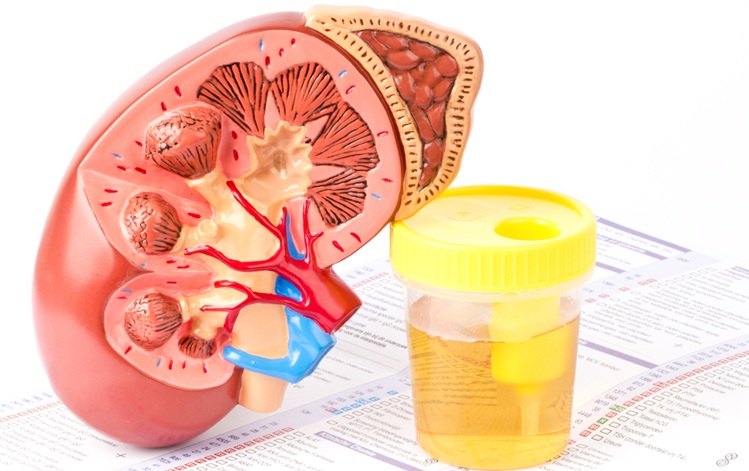
Urine Test Could Replace Painful Kidney Biopsies for Lupus Patients
Lupus is an autoimmune disorder that causes the immune system to attack the body’s own tissues and organs. Among the five million people living with lupus globally, nearly half develop lupus nephritis,... Read more
Blood Test Guides Post-Surgical Immunotherapy for Muscle-Invasive Bladder Cancer
After surgery for muscle-invasive bladder cancer, many patients face uncertainty about whether residual cancer cells remain in their bodies. Now, a new international phase 3 study has demonstrated that... Read more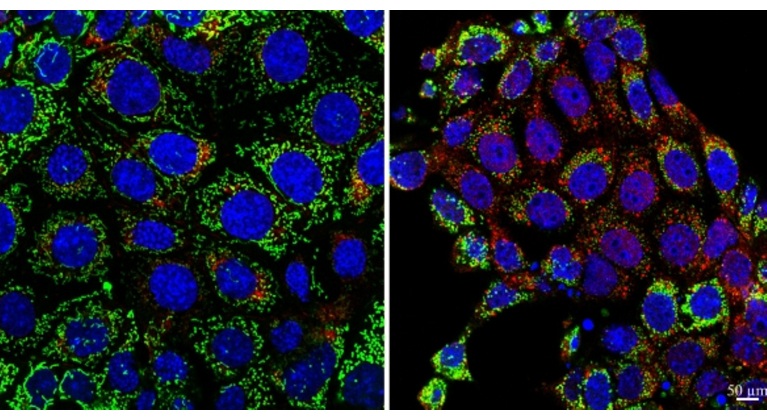
Mitochondrial DNA Mutations from Kidney Stressors Could Predict Future Organ Decline
Kidney-related diseases are alarmingly common: chronic kidney disease (CKD) affects more than one in seven U.S. adults, while about 20% of hospitalized adults are diagnosed with acute kidney injury (AKI).... Read moreHematology
view channel
Viscoelastic Testing Could Improve Treatment of Maternal Hemorrhage
Postpartum hemorrhage, severe bleeding after childbirth, remains one of the leading causes of maternal mortality worldwide, yet many of these deaths are preventable. Standard care can be hindered by delays... Read more
Pioneering Model Measures Radiation Exposure in Blood for Precise Cancer Treatments
Scientists have long focused on protecting organs near tumors during radiotherapy, but blood — a vital, circulating tissue — has largely been excluded from dose calculations. Each blood cell passing through... Read more
Platelets Could Improve Early and Minimally Invasive Detection of Cancer
Platelets are widely recognized for their role in blood clotting and scab formation, but they also play a crucial role in immune defense by detecting pathogens and recruiting immune cells.... Read more
Portable and Disposable Device Obtains Platelet-Rich Plasma Without Complex Equipment
Platelet-rich plasma (PRP) plays a crucial role in regenerative medicine due to its ability to accelerate healing and repair tissue. However, obtaining PRP traditionally requires expensive centrifugation... Read moreImmunology
view channel
Molecular Microscope Diagnostic System Assesses Lung Transplant Rejection
Lung transplant recipients face a significant risk of rejection and often require routine biopsies to monitor graft health, yet assessing the same biopsy sample can be highly inconsistent among pathologists.... Read more
Blood Test Tracks Treatment Resistance in High-Grade Serous Ovarian Cancer
High-grade serous ovarian cancer (HGSOC) is often diagnosed at an advanced stage because it spreads microscopically throughout the abdomen, and although initial surgery and chemotherapy can work, most... Read more
Luminescent Probe Measures Immune Cell Activity in Real Time
The human immune system plays a vital role in defending against disease, but its activity must be precisely monitored to ensure effective treatment in cancer therapy, autoimmune disorders, and organ transplants.... Read more
Blood-Based Immune Cell Signatures Could Guide Treatment Decisions for Critically Ill Patients
When a patient enters the emergency department in critical condition, clinicians must rapidly decide whether the patient has an infection, whether it is bacterial or viral, and whether immediate treatment... Read moreMicrobiology
view channel
Fast Noninvasive Bedside Test Uses Sugar Fingerprint to Detect Fungal Infections
Candida bloodstream infections are a growing global health threat, causing an estimated 6 million cases and 3.8 million deaths annually. Hospitals are particularly vulnerable, as weakened patients after... Read more
Rapid Sepsis Diagnostic Device to Enable Personalized Critical Care for ICU Patients
Sepsis is a life-threatening condition that occurs when the body’s response to infection spirals out of control, damaging organs and leading to critical illness. Patients often arrive at intensive care... Read morePathology
view channel
AI-Powered Method Combines Blood Data to Accurately Measure Biological Age
Chronological age tells us how many years we’ve lived, but not how quickly our bodies are ageing. Some people stay healthy well into their 80s or 90s, while others experience decline much earlier.... Read more
AI Tool Detects Cancer in Blood Samples In 10 Minutes
Detecting cancer recurrence or spread often depends on identifying rare tumor cells circulating in the bloodstream — a process known as a liquid biopsy. However, current methods rely on trained specialists... Read moreTechnology
view channel
Viral Biosensor Test Simultaneously Detects Hepatitis and HIV
Globally, over 300 million people live with Hepatitis B and C, and 40 million with HIV, according to WHO estimates. Diagnosing bloodborne viruses such as HIV and Hepatitis B and C remains challenging in... Read more
Acoustofluidic Device to Transform Point-Of-Care sEV-Based Diagnostics
Rapid and sensitive detection of small extracellular vesicles (sEVs)—key biomarkers in cancer and organ health monitoring—remains challenging due to the need for multiple preprocessing steps and bulky... Read moreIndustry
view channel
Advanced Instruments Merged Under Nova Biomedical Name
Advanced Instruments (Norwood, MA, USA) and Nova Biomedical (Waltham, MA, USA) are now officially doing business under a single, unified brand. This transformation is expected to deliver greater value... Read more















